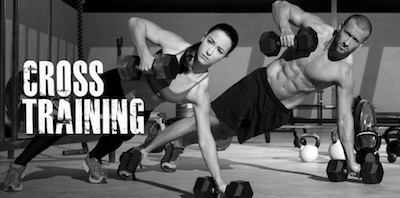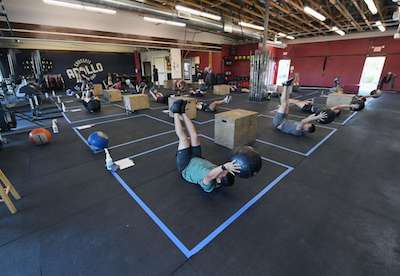Training Tips: Benefits And Implementation Of Cross Training
In case you just heard of cross training, then the first thing you need to know about it is that it is an activity that you can use to limit the impact on your body while still workout. No matter if you want to improve muscular strength, running performance, running economy, injury prevention, and more, cross training is for you.
Discover everything you need to know about cross training.

Overall speaking, there are two main types of cross training:
- Aerobic Impact which includes boot camp, CrossFit, aerobics, or dance.
- Aerobic Non-Impact which includes swimming, pool running, cycling, elliptical, and spinning.
- Strength Work which includes Pilates, yoga, and drills.
Cross Training Benefits
As you can imagine, cross training has huge benefits for your health. In fact, many different studies that clearly show that cross training can improve running economy, running performance, and overall fitness. At the same time, this activity is also a great way to decrease the risk for injuries without increasing your body mass or decreasing blood lactate markers.

Take a look at these tips and tricks to keep your running strong.
Some of the most prominent cross training benefits include:
#1: Time Trial Performance:
According to some studies, you should notice significant performance improvements in time trial performance in a wide range of conditions. So, no matter if you prefer to train under race conditions, indoors, or outdoors, you should experience these improvements.
#2: Your Body Composition Remains The Same:
Another benefit of cross training that many studies point to is that there is no change in your body composition. In case you are a runner, for example, you don’t want to add overall weight since this may slow you down. But this won’t happen when you cross train.
#3: Running Economy:
We have already mentioned the running economy above. In case you don’t know what this is, it simply refers to the oxygen or energy demand for a given velocity of submaximal running. Overall, it is determined by measuring the steady-state consumption of oxygen and the respiratory exchange ratio. Putting all this into simple words, when your running economy is high, your body’s demand for oxygen and energy is greater than when your running economy is lower.
Discover what you need to get ready for your cross training class.
How To Incorporate Cross Training
One of the main questions many people have regarding cross training is how they can incorporate this activity.
The truth is that many athletes, including professional athletes, have already started incorporating cross training to their programming. However, we need to state that they don’t all experienced the same benefits. The main reason why this happened is that they didn’t know how to properly fit cross training. To ensure that this doesn’t happen to you as well, you need to keep in mind that there are different approaches you can take:
#1: Strength Training:

This is probably the approach more people decide to take when they want to incorporate cross training in their programming.
Overall speaking, strength training should be secondary to aerobics and one of the best parts is that it is very easy to add to your running program. After all, you just need to add between 15 of core work 30 minutes of strength circuit at the end of a run.
Notice that strength training sessions should always be short in duration and they should never be overly exhausting.
Take a look at the benefits of cross training in the pool.
#2: Aerobic Non-Impact:

These are probably the easiest activities to incorporate into your program. They should be done 2 to 3 times a week and you can use them to replace a harder workout day or a recovery day.
Non-impact exercises allow you to workout longer and harder than running. For example, if you had planned a 60-minute run, you could replace it with a stationary bike workout for 80-100 minutes or a run on the elliptical for 70-80 minutes at a moderate intensity.
#3: Aerobic Impact:
This approach should be considered for the off-season period. You can do it 1 to 2 times a week. Maybe you want to try out a dance class or CrossFit.



